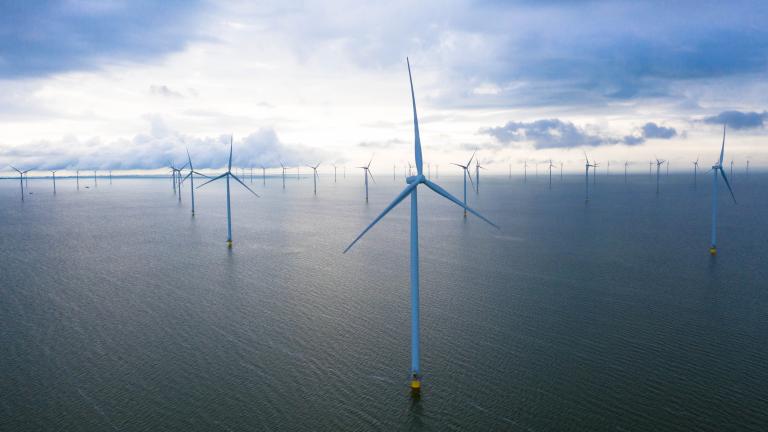
State investment banks (SIBs), i.e., publicly funded financial institutions with a domestic focus, exist in nearly all OECD member countries and are increasingly used to finance the energy transition. Notably, this trend involves jurisdictions that traditionally lean towards less government intervention, such as the United Kingdom or Australia. Most recently, the US EPA has been exploring whether to capitalize a national green bank using parts of the Inflation Reduction Act’s Greenhouse Gas Reduction Fund. Qualitative studies have motivated the use of SIBs with their capacity to finance projects that struggle to source funds from the private sector, such as small-scale projects or those that use less established technologies. In addition, SIBs can mobilize private capital by vetting projects and signaling their commercial viability to potential co-lenders. However, the potential deficiencies of state-owned banks, such as lower efficiency and politically distorted decision-making, are well-known. As a result, it remains unclear if the actual financing patterns of SIBs justify their popularity among policymakers.
To fill this gap, we derive hypotheses on the optimal financing behavior of SIBs from the energy policy literature. To test them, we identify SIB lenders in a sample of 4,999 transactions between 2004–2021 for new renewable energy (RE) projects in OECD member countries. Importantly, our sample covers multiple RE technologies at different stages of maturity, including solar photovoltaics and concentrated solar power, onshore and offshore wind, biomass and waste, geothermal, and small hydro. Using a fixed effect regression model, we estimate the predictors of whether a transaction involved debt financing by one or multiple SIBs, such as the deal size or the market maturity of the financed technology. This allows us to identify what differentiates transactions with SIB involvement from other deals, which are overwhelmingly financed by commercial banks, and whether this aligns with what the academic literature suggests.
We find that in OECD countries, SIBs’ lender activities involve 11% of RE transactions and is about two times larger than for all other public sector entities combined, which illustrates their increasingly significant role in financing renewables around the globe. SIBs are more likely to appear in deals for higher-risk technologies, an effect that is most pronounced for offshore wind where SIBs are involved in almost 75% of transactions. For solar photovoltaic plants, whose risk profile has improved considerably over the last two decades, our results indicate that SIBs reduce their financing activities once the technology matures in the respective country. Although SIBs feature regularly on the first transactions providing debt to a novel technology in a country, their activity as “first-mover” is outperformed by other public sector lenders, such as export credit agencies, government ministries, or, for Latin-American OECD countries, development banks.
Contrary to the notion that SIBs should deliberately support smaller projects, we find that their involvement increases in the transaction size. This could result from political biases in favor of prominent large-scale RE projects, or from the incentives of SIB managers and staff being misaligned with the policy objective of enabling smaller-scale (but more laborious and potentially less profitable) RE projects. Regarding the question of mobilizing private capital, our results paint a mixed picture. On the one hand, we find that SIBs often operate as sole lenders, particularly for projects sponsored by public sector entities. On the other hand, we find that SIBs’ involvement as a co-lender in bank syndicates correlates weakly with a larger syndicate size, in line with extant studies from the empirical finance literature.
Our results highlight the potential of SIBs for policymakers that are considering revising the mandate of existing institutions or establishing new green banks to foster the energy transition. In realizing the potential of SIBs for the clean energy transition, decision-makers should make sure that the SIB’s mandate and guidelines are effective in enabling smaller RE projects if that is a policy objective, and pay attention that either SIBs or other public sector lenders deliberately target market-opening projects that deploy novel technologies. Furthermore, we suggest that policymakers should consider mandating or incentivizing SIBs to withdraw from sufficiently mature technologies if they no longer struggle to obtain debt financing from the private sector. Overall, our analysis adds to the understanding on how SIBs can complement other policy instruments as part of an effective climate policy strategy, supporting policymakers that aim at fostering the clean energy transition.
Further Reading:
CEEPR WP 2023-07
About The Authors
 |
Paul Waidelich is a Ph.D. candidate at ETH Zurich’s Climate Finance and Policy Group. His research focuses on the financing of low-carbon technologies and the implications of climatic shifts for financial institutions and investors, combining micro-econometric approaches with climate-economy modeling. Before his Ph.D. studies, Paul worked at NERA Economic Consulting, advising energy companies, regulators, and financial investors on electricity, natural gas, and hydrogen markets. He holds a Bachelor’s in economics from the University of Heidelberg and a Master’s in environmental economics and climate change from the London School of Economics and Political Science. |
 |
Bjarne Steffen is Assistant Professor at ETH Zurich and the head of the Climate Finance and Policy Group at ETH. His research addresses policies related to energy innovation and the role of finance in the low-carbon energy transition. Bjarne is the PI of the ERC Starting Grant project GREENFIN – Effective Green Financial Policies for the Low-Carbon Transition. He is a research affiliate with MIT CEEPR, where he also was a visiting scholar during 2019. He holds a Master’s in economics from the University of Mannheim and a Ph.D. in energy economics from the University of Duisburg-Essen. |






